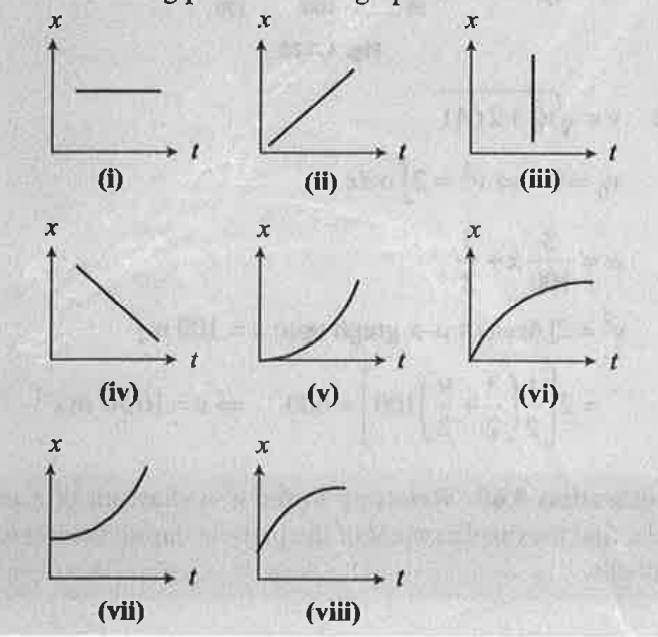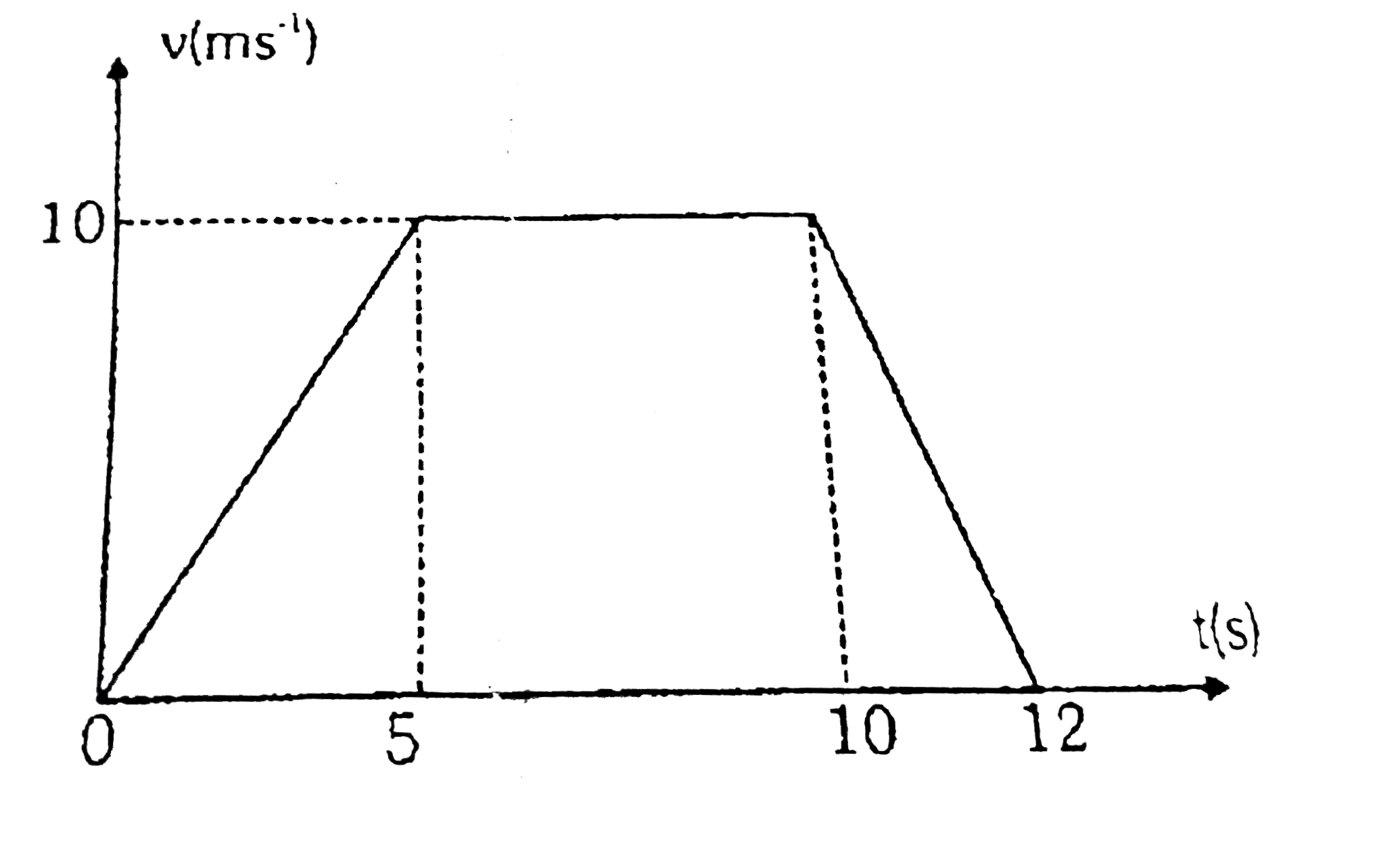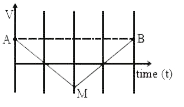a. What can you say about velocity in each of the following position-time graphs?
 .
.
 .
.
 .
.
 .
.
 .
.
 .
.
 .
.
 .
.
b. The slope of the velocity-time graph is equal to acceleration. (True//False)
c. What does the area under acceleration-time graph represents?
d. Can velocity-time graph be parallel to the velocity axis? (Yes//No)
e. What is the slope of the v−t fraph in uniform motion? .
a. We know that the slope of the position-time graph is equal to veloctiy. So
i. as the slope is zero it is zero velocity.
ii. As the slope is positive and constant, it is constant positve velocity .
iii. As the slope is infinite, it is infinite velocity.
iv. as the slope is negative and constant, it is constant negative increasing velocity .
vi as the slope is positive and decreasing, it is positive increasing velocity.
vii. as the slope is positive and increasing, it is positive increasing velocity.
viii. as the slope is positive and decteasing, it is positive decreasing veovity.
b. True, as dv/dt=acceleration.
c. Chagein velocity
d. No because it will indicate infinite acceleration, which is not poasible
e. Zero, becoause acceleration will be zero inuniform motion.
Related Playlists
- BOOK - CENGAGE PHYSICS ENGLISHCHAPTER - KINEMATICS-1EXERCISE - Subjective29videos
KINEMATICS-1
- BOOK - CENGAGE PHYSICS ENGLISHCHAPTER - KINEMATICS-1EXERCISE - Single Correct52videos
KINEMATICS-1
- BOOK - CENGAGE PHYSICS ENGLISHCHAPTER - KINEMATICS-1EXERCISE - Exercise 4.315videos
KINEMATICS-1
- BOOK - CENGAGE PHYSICS ENGLISHCHAPTER - GRAVITATIONEXERCISE - INTEGER_TYPE1videos
GRAVITATION
- BOOK - CENGAGE PHYSICS ENGLISHCHAPTER - KINEMATICS-2EXERCISE - Exercise Integer9videos
KINEMATICS-2
Similar Questions
Slope of a velocity – time graph gives
View SolutionArea under a velocity-time graph gives
View SolutionThe area under a velocity-time graph gives :
View SolutionWhat does the slope of velocity-time graph represent ?
View SolutionDraw displacement time and acceleration -time graph for the given velocity-time graph
 View Solution
View SolutionDraw displacement time and acceleration -time graph for the given velocity-time graph
 View Solution
View SolutionFor a given acceleration − time graph, there exist ………………………… velocity − time graph
View SolutionThe area under a Velocity-Time graph represents ______________.
View SolutionIf the velocity-time graph has the shape AMB, what would be the shape of the corresponding acceleration-time graph ?
 View Solution
View SolutionAssertion: Area under velocity-time graph give displacement.
Reason: Area under acceleration-time graph give velocity.View Solution

